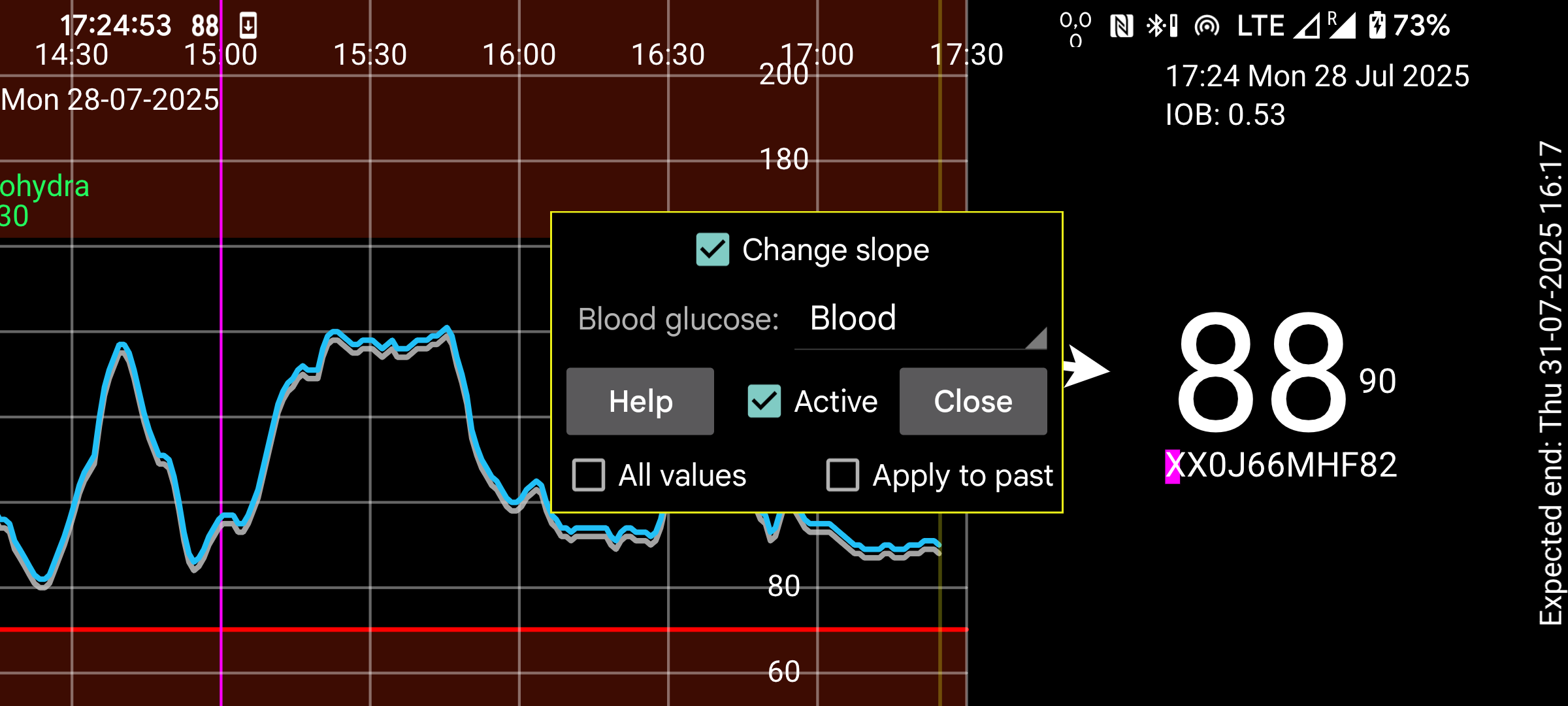
Juggluco 10.0.0 and higher have the possibility to calibrate sensors.
Blood glucose: Specify which label stands for the blood glucose finger prick measurements. Hereafter, all blood glucose values entered under that label will be used for calibration, except when you specify “Exclude” under left middle menu→New amount. When the rate of change is too large (absolutely) it will be automatically excluded.
You should only exclude glucose values that are not appropriate for calibration because the glucose level is not steady. All other values should not be excluded, even when you think that the sensor don’t need to be calibrated. When you don’t want to calibrate, unset “Active” and unset right middle menu→Calibrated. This way all appropriate glucose values are used for calibration, not only those that don’t agree.
Every new finger prick that is not excluded gives a new calibration. You can view the calibrations made by pressing “Calibrations” in the sensor information screen. You can come to sensor information by long pressing the glucose curve or under left menu→Sensor. (Calibrations are specific to a particular sensor.)
If “Apply to past” is not set, glucose values are calibrated with the last calibration before the glucose value. If “Apply to past” is set the last calibration is applied to all glucose values of this sensor.
Change slope:
If “Change slope” is not set, only a certain value is added or subtracted from every sensor glucose value to get the calibrated glucose value. The relation between calibrated value and sensor value is:
Calibrated glucose=SensorGlucose + b
The value of b is determined by calibration.
If “Change slope” is set the relation becomes:
Calibrated glucose=a * SensorGlucose + b
Whereby a can be different from 1. This kind of calibration is only possible when enough blood glucose measurements are made with values representing all sensor glucose levels. When if example all glucose measurements were made when the glucose value was around 90 mg/dL (5 mmol/L) and the sensor values are spread from 54 mg/dL to 180 mg/dL (3 mmol/L to 10 mmol/L) these values are not diverse enough to infer the value of a. Juggluco itself checks if there are enough values (count >=3) and there is enough variance (standard deviation blood glucose > 0.62 * standard deviation CGM glucose).
Juggluco weights glucose measurements dependent on how old they are. The current glucose value has weight=1, older glucose values have a smaller weight. The calibration is also weighted so that an older calibration has less influence, so that a goes to 1 with time and b to zero with time.
The total weight of used blood glucose measurements determined how much weight is given to the calibration. With more (recent) blood glucose measurements, the calibrated glucose values are tilted more to the best fit inferred between blood glucose and CGM glucose from these measurements.
Active:
When active is set, the calibrated glucose values are used for alarms, broadcasts, Health connect, the Nightscout/xDrip webserver in Juggluco, glucose values send to watches and floating glucose. On the right side of Juggluco the calibrated value is displayed in large font with the uncalibrated value after it in small font. It is never used for sending to Libreview or applied to scans or history values.
The calibrated glucose values can always be viewed by switching on right middle menu→Calibrated.
All values: For certain values there is no calibrated value. The curve of calibrated values (switched on with right middle menu→Calibrated) will show nothing, if “All values” is not checked. If “All values” is checked, it will show the uncalibrated value. This way you can switch off right middle menu→Stream and still see all values.